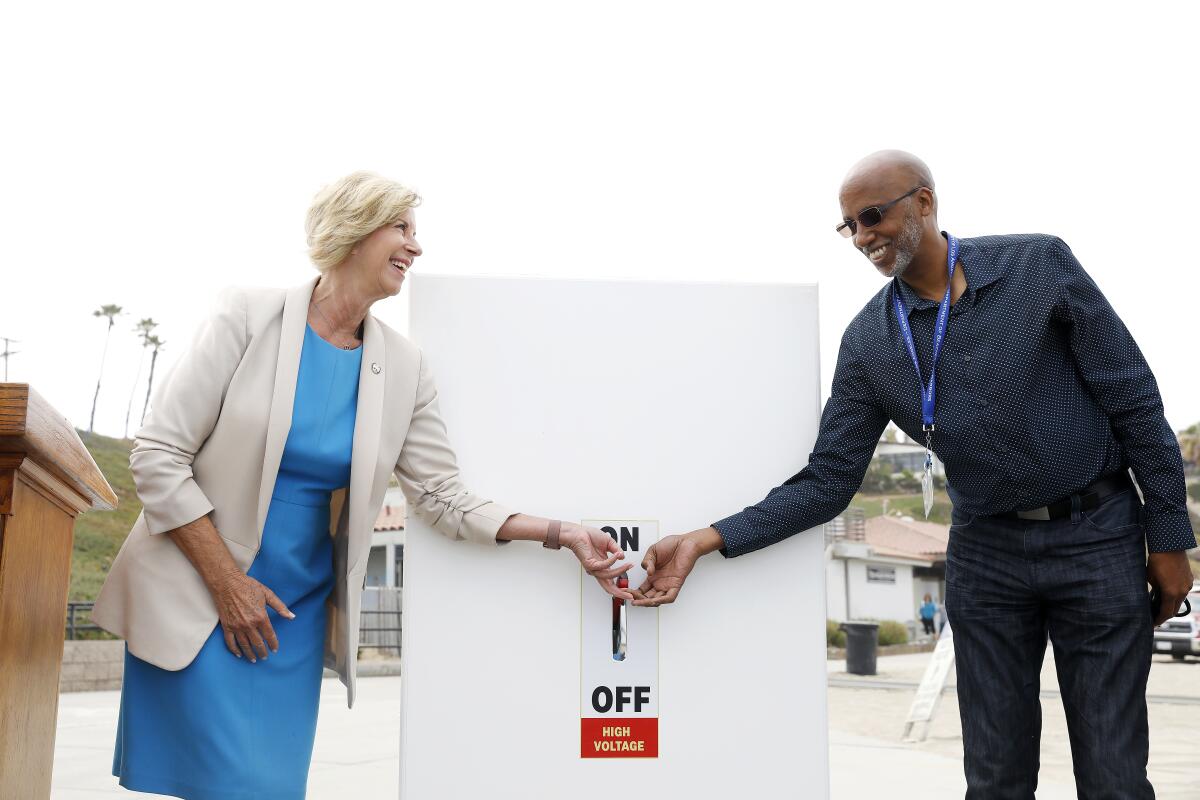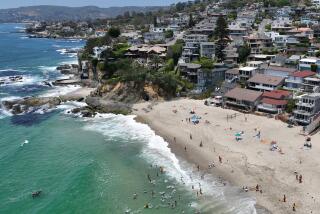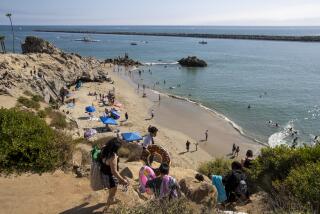New emergency system aims to help make beaches accessible to deaf visitors

Randy Dean’s passion project started three years ago out of a beat-up plastic suitcase.
A strobe light screwed into a case, a 6-volt battery, a switch and Dean’s desire to help people who are deaf or hard of hearing evolved into the Beach Emergency Evacuation Lights System.
On Friday, the Los Angeles County Department of Beaches and Harbors launched a BEELS pilot program at Torrance Beach.
County officials equipped two buildings and lifeguard towers with nine loudspeakers and 48 strobe lights. The system relays audible warnings in English and Spanish, accompanied by flashing LED strobe lights that can be seen up to half a mile away. The speakers output sound up to 109 decibels.
BEELS is the first of its kind. In the event of an emergency — such as a tsunami, rip current or shark sighting — lifeguards will activate the system.
Warnings can be for just one beach or widespread, and signs posted in the parking lot will help visitors decipher the strobes: fast means full evacuation, slow is for a water-only evacuation.
The design mimics fire alarms and doorbells with strobe lights, like those seen in hotels. Los Angeles County lifeguards are also being taught basic American Sign Language.
Gary Jones, director of the county Beaches and Harbors Department, said its mission is to improve
accessibility to California’s iconic coastline.
“Our beaches are open seven days a week, 365 days a year, but none of that matters if people can’t come,” he said.
The vision for BEELS, Dean said, is to help increase accessibility for the deaf and hard-of-hearing community.
“We wanted to make sure we brought technology to a greater level at our beaches and give everyone the same accessibility to respond to emergency evacuations at the same time,” he said.
Renee Thomas, director of human services for the Greater Los Angeles Agency on Deafness, said the agency’s collaboration with Dean was effortless.
“When BEELS contacted us [about setting up] this project to make beaches more accessible, we thought it was a fantastic idea,” Thomas said. “We wanted to start right away.”
The Greater Los Angeles Agency on Deafness, several county agencies and the city of Torrance worked together on the project. Maria Bird, lifeguard division chief for the Los Angeles County Fire Department, said she envisions BEELS as instrumental in helping lifeguards evacuate beaches during critical situations.
BEELS will start as a one-year pilot program at Torrance Beach before expanding to other coastal areas in the county. But Thomas said the Greater Los Angeles Agency on Deafness hopes the project will serve as a model for beaches across California and nationwide.
The Torrance Beach pilot program cost about $225,000. Pending budget approval, installation across all 20 county beaches could begin within two years.
In August, a Video Remote Interpreting system was installed at the Marina del Rey visitors center, enabling on-demand ASL interpreting services. BEELS is the next move by the Beaches and Harbors Department to improve accessibility.
Dean, a safety operator for the Beaches and Harbors Department, said the inspiration came from his two children, Ashli and Steven, both hard of hearing. He said he hopes BEELS will become the norm at all beaches, lakes and other public recreation areas.
“I’m very excited about not only what we’ve been able to accomplish but where we’re going to take this,” he said.
More to Read
Sign up for Essential California
The most important California stories and recommendations in your inbox every morning.
You may occasionally receive promotional content from the Los Angeles Times.









